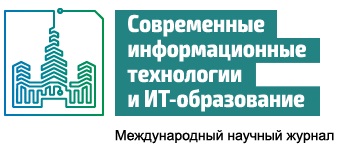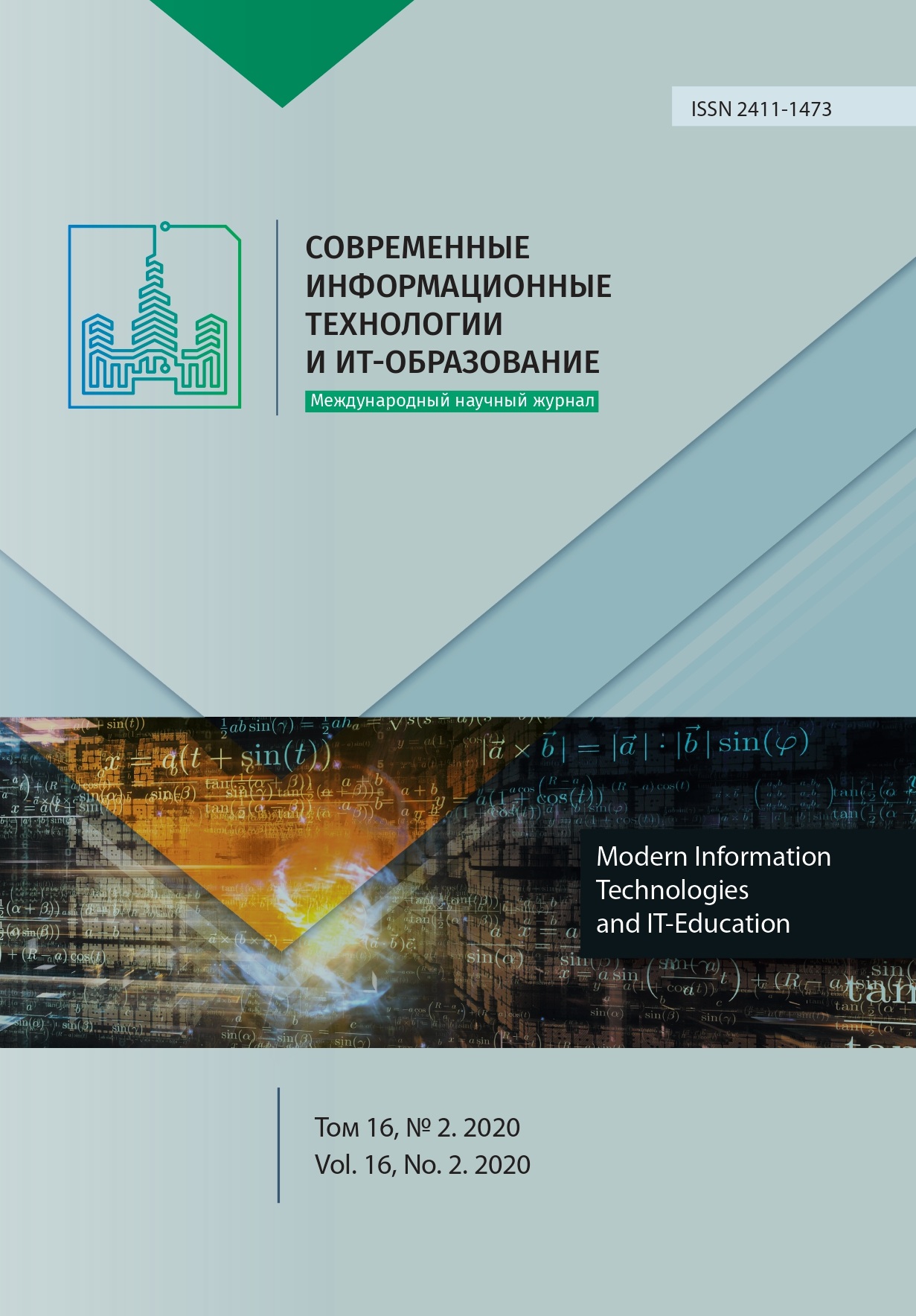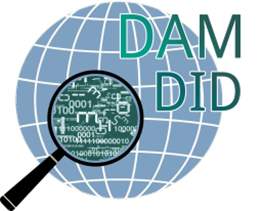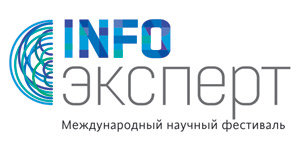Применение глубокого обучения с подкреплением в алгоритмической торговле
Аннотация
На текущий момент существует большой объем литературы по торговле на бирже. Очевидно, что с каждым годом математическая база работ усложняется вместе с увеличением вычислительной мощности, машины за единицу времени могут обрабатывать больше метрик от года к году и выдавать более точные решения. Применение глубокого обучения уже хорошо зарекомендовало себя, так как применение такого подхода дало качественный скачок в алгоритмической торговле.
В статье представлен алгоритм торговли длинными контрактами одним активом на финансовом рынке на языке программирования Python с применением нейронной сети LSTM при помощи библиотеки Keras, который используется в качестве демонстрационного примера по дисциплине "Обучение с подкреплением". Формализовано модель LSTM решает проблему исчезающих градиентов, которая может удерживать градиент целевой функции относительно сигнала состояния. В применении к нашей задаче такое улучшение модели позволяет собирать данные о тех или иных паттернах изменения цены, то есть при предсказании цены следующего шага опираемся не только на данные предыдущего шага, но и на более ранние данные, когда было схожее состояние среды. Коэффициент Шарпа используется для определения оптимальной стратегии и принятия решения в каждый момент времени применения. Определены оптимальный минимальный временной промежуток для работы модели; задержка передачи сигнала от момента изменения ситуации на рынке до приема сигнала моделью, которая будет бесконечно малой, а вычислительную мощность будем считать бесконечно большой. Эти допущения дают право говорить: при изменении ситуации на рынке модель мгновенно готова среагировать и принять решение о продаже, покупке или удержании актива.
Литература
[2] Ponomarev E.S., Oseledets E.V., Cichocki A.S. Algorithmic Trading with Reinforcement Learning. Information Processes. 2019; 19(2):122-131. Available at: https://www.elibrary.ru/item.asp?id=38538082 (accessed 02.09.2020). (In Russ., abstract in Eng.)
[3] Kasyanov R.A. MIFID II The Regulation of Algorithmic Trading and High-frequency Algorithmic Trading. Financial Law. 2018; (6):3-7. Available at: https://www.elibrary.ru/item.asp?id=35133781 (accessed 02.09.2020). (In Russ., abstract in Eng.)
[4] Krasnikov V.S. Algorithm for Placing Stop Orders when Trading Long Contracts. Scientific notes of young scientists. 2018; (4):21-30. Available at: https://www.elibrary.ru/item.asp?id=35588843 (accessed 02.09.2020). (In Russ., abstract in Eng.)
[5] Shaipova S.A. High-Frequency Trading and its Development in the Trade Market. Bulletin of the Academy of Law and Management. 2018; (3):146-149. Available at: https://www.elibrary.ru/item.asp?id=36319246 (accessed 02.09.2020). (In Russ., abstract in Eng.)
[6] Xie M., Li H., Zhao Yu. Blockchain financial investment based on deep learning network algorithm. Journal of Computational and Applied Mathematics. 2020; 372:112723. (In Eng.) DOI: https://doi.org/10.1016/j.cam.2020.112723
[7] Borges T.A., Neves R.F. Ensemble of machine learning algorithms for cryptocurrency investment with different data resampling methods. Applied Soft Computing. 2020; 90:106187. (In Eng.) DOI: https://doi.org/10.1016/j.asoc.2020.106187
[8] Palmov S.V., Artyushkina E.S. Deep Learning: Definition and Distinctive Features. Forum molodyh uchenyh. 2020; (3):311-316. Available at: https://www.elibrary.ru/item.asp?id=42857736 (accessed 02.09.2020). (In Russ., abstract in Eng.)
[9] Chistova E.V., Shelmanov A.O., Smirnov I.V. Natural Language Dialogue Modelling with Deep Learning. Proceedings of the Institute for Systems Analysis Russian Academy of Sciences. 2019; 69(1):105-115. (In Russ., abstract in Eng.) DOI: https://doi.org/10.14357/20790279190110
[10] Sineglazov V.M., Koniushenko R.S. Deep learning fuzzy classifier. Electronics and Control Systems. 2019; 2(60):35-42. (In Eng.) DOI: https://doi.org/10.18372/1990-5548.60.13813
[11] Potemkin A.V. Processing Different Information Using the Deep Learning of Neural Networks. Soft Measurements and Computing. 2019; (9):44-48. Available at: https://www.elibrary.ru/item.asp?id=41688926 (accessed 02.09.2020). (In Russ., abstract in Eng.)
[12] Efremtsev V.G., Ejtemtsev N.G., Teterin E.P., Teterin P.E., Gantsovsky V.V. Deep Learning Application for Box-office Evaluation of Images. Computer Optics. 2020; 44(1):127-132. (In Russ., abstract in Eng.) DOI: https://doi.org/10.18287/2412-6179-CO-515
[13] Liu F., et al. State representation modeling for deep reinforcement learning based recommendation. Knowledge-Based Systems. 2020; 205:106170. (In Eng.) DOI: https://doi.org/10.1016/j.knosys.2020.106170
[14] Pandey V., Wang E., Boyles S.D. Deep reinforcement learning algorithm for dynamic pricing of express lanes with multiple access locations. Transportation Research Part C: Emerging Technologies. 2020; 119:102715. (In Eng.) DOI: https://doi.org/10.1016/j.trc.2020.102715
[15] Liu F., Tang R., et al. Top-aware reinforcement learning based recommendation. Neurocomputing. 2020; 417:255-269. (In Eng.) DOI: https://doi.org/10.1016/j.neucom.2020.07.057
[16] Park H., Sim M.K., Choi D.G. An intelligent financial portfolio trading strategy using deep Q-learning. Expert Systems with Applications. 2020; 158:113573. (In Eng.) DOI: https://doi.org/10.1016/j.eswa.2020.113573
[17] Lu R., Hong S.H., Zhang X. A Dynamic pricing demand response algorithm for smart grid: Reinforcement learning approach. Applied Energy. 2018; 220:220-230. (In Eng.) DOI: https://doi.org/10.1016/j.apenergy.2018.03.072
[18] Tymchenko B., Marchenko Ph., Spodarets D. Segmentation of Cloud Organization Patterns from Satellite Images Using Deep Neural Networks. Herald of Advanced Information Technology. 2020; 3(1):352-361. (In Eng.) DOI: https://doi.org/10.15276/hait01.2020.2
[19] Gorshenin A.K., Kuzmin V.Yu. Analysis of Configurations of LSTM Networks for Medium-Term Vector Forecasting. Informatics and Applications. 2020; 14( 1): 10-16. (In Eng.) DOI: https://doi.org/10.14357/19922264200102
[20] Chakole J. B., et al. A Q-learning agent for automated trading in equity stock markets. Expert Systems with Applications. 2021; 163:113761. (In Eng.) DOI: https://doi.org/10.1016/j.eswa.2020.113761
[21] Betancourt C., Chen W.-H. Deep reinforcement learning for portfolio management of markets with a dynamic number of assets. Expert Systems with Applications. 2021; 164:114002. (In Eng.) DOI: https://doi.org/10.1016/j.eswa.2020.114002
[22] Lei K., Zhang B., Li Y., Yang M., Shen Y. Time-driven feature-aware jointly deep reinforcement learning for financial signal representation and algorithmic trading. Expert Systems with Applications. 2020; 140:112872. (In Eng.) DOI: https://doi.org/10.1016/j.eswa.2019.112872
[23] Nguyen T.T., et al. A multi-objective deep reinforcement learning framework. Engineering Applications of Artificial Intelligence. 2020; 96:103915. (In Eng.) DOI: https://doi.org/10.1016/j.engappai.2020.103915
[24] Riesener M., Dölle C., Dierkes C., Jank M.-H. Applying Supervised and Reinforcement Learning to Design Product Portfolios in Accordance with Corporate Goals. Procedia CIRP. 2020; 91:127-133. (In Eng.) DOI: https://doi.org/10.1016/j.procir.2020.02.157
[25] Jeong G., Kim H.Y. Improving financial trading decisions using deep Q-learning: Predicting the number of shares, action strategies, and transfer learning. Expert Systems with Applications. 2019; 117:125-138. (In Eng.) DOI: https://doi.org/10.1016/j.eswa.2018.09.036
[26] Jeong G., Kim H.Y. Improving financial trading decisions using deep Q-learning: Predicting the number of shares, action strategies, and transfer learning. Expert Systems with Applications. 2019; 117:125-138. (In Eng.) DOI: https://doi.org/10.1016/j.eswa.2018.09.036
[27] Gao W., Su Ch. Analysis on block chain financial transaction under artificial neural network of deep learning. Journal of Computational and Applied Mathematics. 2020; 380:112991. (In Eng.) DOI: https://doi.org/10.1016/j.cam.2020.112991

Это произведение доступно по лицензии Creative Commons «Attribution» («Атрибуция») 4.0 Всемирная.
Редакционная политика журнала основывается на традиционных этических принципах российской научной периодики и строится с учетом этических норм работы редакторов и издателей, закрепленных в Кодексе поведения и руководящих принципах наилучшей практики для редактора журнала (Code of Conduct and Best Practice Guidelines for Journal Editors) и Кодексе поведения для издателя журнала (Code of Conduct for Journal Publishers), разработанных Комитетом по публикационной этике - Committee on Publication Ethics (COPE). В процессе издательской деятельности редколлегия журнала руководствуется международными правилами охраны авторского права, нормами действующего законодательства РФ, международными издательскими стандартами и обязательной ссылке на первоисточник.
Журнал позволяет авторам сохранять авторское право без ограничений. Журнал позволяет авторам сохранить права на публикацию без ограничений.
Издательская политика в области авторского права и архивирования определяются «зеленым цветом» в базе данных SHERPA/RoMEO.
Все статьи распространяются на условиях лицензии Creative Commons «Attribution» («Атрибуция») 4.0 Всемирная, которая позволяет другим использовать, распространять, дополнять эту работу с обязательной ссылкой на оригинальную работу и публикацию в этом журналe.













